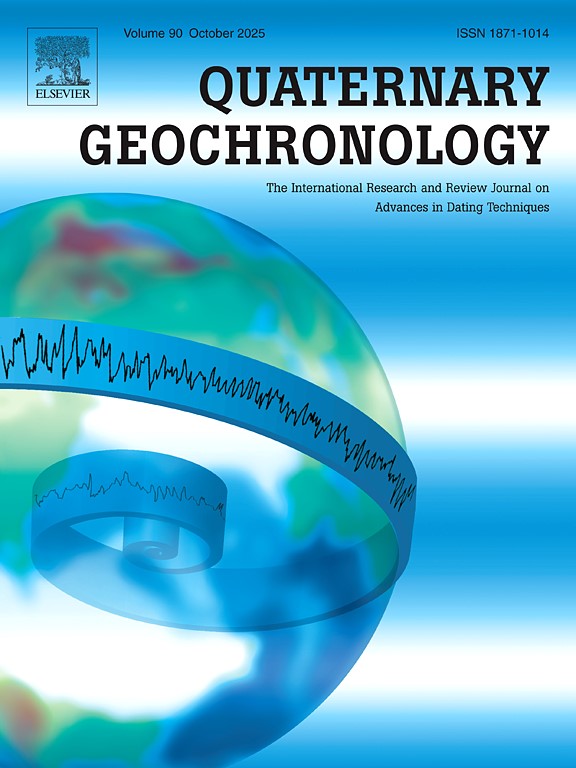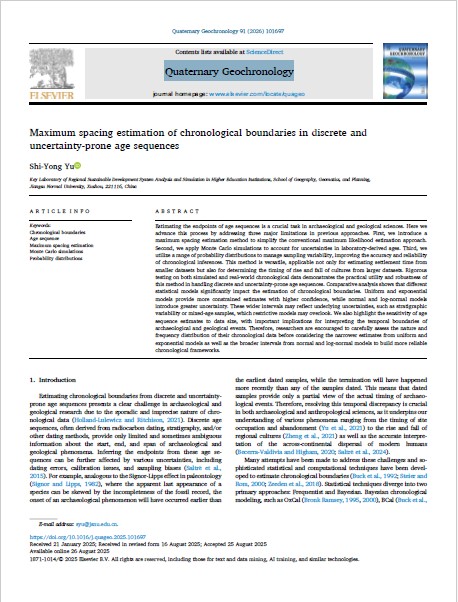Abstract:Estimating the endpoints of age sequences is a crucial task in archaeological and geological sciences. Here we advance this process by addressing three major limitations in previous approaches. First, we introduce a maximum spacing estimation method to simplify the conventional maximum likelihood estimation approach. Second, we apply Monte Carlo simulations to account for uncertainties in laboratory-derived ages. Third, we utilize a range of probability distributions to manage sampling variability, improving the accuracy and reliability of chronological inferences. This method is versatile, applicable not only for estimating settlement time from smaller datasets but also for determining the timing of rise and fall of cultures from larger datasets. Rigorous testing on both simulated and real-world chronological data demonstrates the practical utility and robustness of this method in handling discrete and uncertainty-prone age sequences. Comparative analysis shows that different statistical models significantly impact the estimation of chronological boundaries. Uniform and exponential models provide more constrained estimates with higher confidence, while normal and log-normal models introduce greater uncertainty. These wider intervals may reflect underlying uncertainties, such as stratigraphic variability or mixed-age samples, which restrictive models may overlook. We also highlight the sensitivity of age sequence estimates to data size, with important implications for interpreting the temporal boundaries of archaeological and geological events. Therefore, researchers are encouraged to carefully assess the nature and frequency distribution of their chronological data before considering the narrower estimates from uniform and exponential models as well as the broader intervals from normal and log-normal models to build more reliable chronological frameworks.


论文链接:https://www.sciencedirect.com/science/article/pii/S1871101425000482
论文附件:
(一审:于世永,二审:谢磊,三审:郭风成)



